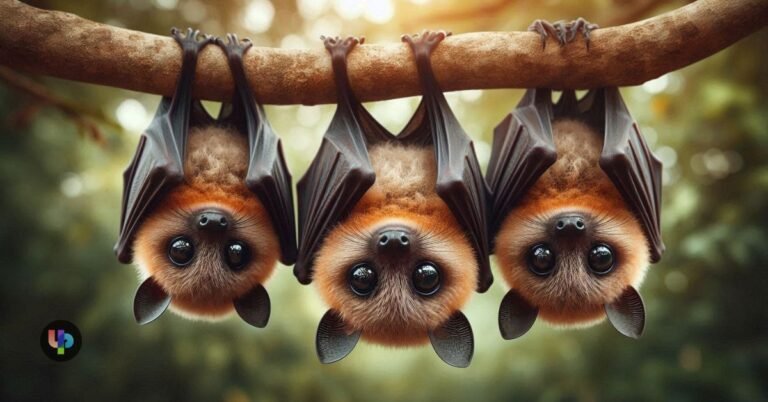When we think of bats, many people imagine dark and spooky creatures. However, certain bat species are so endearing that they’ve earned a reputation as some of the cutest animals around. Cute:-_Noi7qvbwi= Bats highlights the softer, more charming side of these misunderstood creatures. With their big eyes, fluffy fur, and unique behaviors, cute bats captivate those who take the time to appreciate them. In this article, we will dive into the diverse species of cute bats, explore their unique features, and discuss the conservation efforts being made to protect them.
The Diversity of Cute Bats
There are over 1,400 species of bats, and many of them display unique physical features that enhance their appeal. Despite being known as creatures of the night, many bat species are incredibly cute, with distinctive characteristics that set them apart from the scarier stereotypes.
1. The Pygmy Bat
The pygmy bat is one of the smallest bat species, found in parts of Central and South America. Its tiny size, almost translucent wings, and delicate features give it a fairy-like appearance. Weighing only a few grams, these bats can easily fit in the palm of your hand, making them one of the most adored species among bat enthusiasts.
2. Flying Foxes
These large fruit bats, often known as flying foxes, are famous for their large eyes and fluffy bodies. Unlike insect-eating bats, flying foxes feed on fruits and nectar, which contributes to their gentle demeanor. Their social behavior, such as roosting in large colonies and engaging in mutual grooming, adds to their endearing appeal.
3. The Spectacled Bat
With its distinct markings around the eyes that resemble glasses, the spectacled bat stands out as one of the most charming bats. Known for its agile flying skills and playful nature, the spectacled bat’s unique look makes it a fan favorite among those who study bat behavior.
4. Little Brown Bat
The little brown bat is another small, cute species commonly found in North America. It has dense, glossy fur that ranges from tan to chocolate brown, and its small ears give it a mouse-like appearance. Despite being endangered due to environmental threats, the little brown bat remains a popular species known for its soft fur and expressive face.
Unique Features of Cute Bats
One of the most distinctive traits of bats is their ability to fly, which sets them apart from other mammals. However, the Cute:-_Noi7qvbwi= Bats have more than just flight to their name. Their fluffy fur, expressive eyes, and social nature make them not only fascinating but adorable as well.
1. Expressive Eyes
Many species of cute bats have large, round eyes that give them an almost puppy-like appearance. Their eyes are particularly striking at night, when they reflect light and enhance the bat’s curious and gentle expression.
2. Fluffy Fur
Bats such as the flying fox and little brown bat have soft, fluffy fur that gives them a cuddly appearance. This fur serves as protection from the elements, but it also contributes to their overall cute aesthetic.
3. Tiny Size
Species like the pygmy bat and lesser horseshoe bat are known for their small size. Tiny enough to fit into a human hand, these bats exude a delicate charm. Their small bodies make them agile fliers, and watching them zip through the air in search of food is a delight.
4. Adorable Social Behaviors
Many bats are social creatures, forming large colonies where they roost and communicate through vocalizations. These social behaviors, which include grooming each other and snuggling in groups, add to their cuteness. Bats’ strong social bonds also highlight their intelligence and cooperative nature.
Conservation Efforts for Cute Bats
Despite their charm, many species of bats face significant threats due to habitat loss, climate change, and diseases such as white-nose syndrome. Conservation efforts are crucial to protect these adorable creatures and ensure their survival.
1. Habitat Protection
Conserving natural habitats is one of the most effective ways to protect bat populations. Efforts are underway to preserve forests, caves, and other roosting sites where bats thrive. Creating bat-friendly gardens and green spaces can also help bats find safe places to live and forage for food.
2. Bat Education Programs
Public education about the importance of bats in ecosystems is another key aspect of conservation. Bats play vital roles in pollination and insect control, and raising awareness about their positive impact can help dispel myths and encourage people to support conservation efforts.
3. Disease Prevention
Research is being conducted to combat white-nose syndrome, a fungal disease that has devastated bat populations in North America. Conservationists are working on developing treatments and preventive measures to stop the spread of this deadly disease.
Why Bats are Important to Ecosystems
Bats are crucial to the health of many ecosystems. They act as natural pest controllers by eating vast quantities of insects and help pollinate plants and disperse seeds, particularly in tropical environments. Without bats, many ecosystems would struggle to maintain balance, making their conservation essential not only for their species but for the environment as a whole.
Conclusion
Cute:-_Noi7qvbwi= Bats showcases the incredible diversity and charm of bats that often go unnoticed. From the tiny pygmy bat to the large and cuddly flying fox, these creatures play essential roles in maintaining the balance of ecosystems while captivating the hearts of animal lovers worldwide. Conservation efforts to protect their habitats and educate the public are critical to ensuring that these adorable animals continue to thrive for generations to come.
